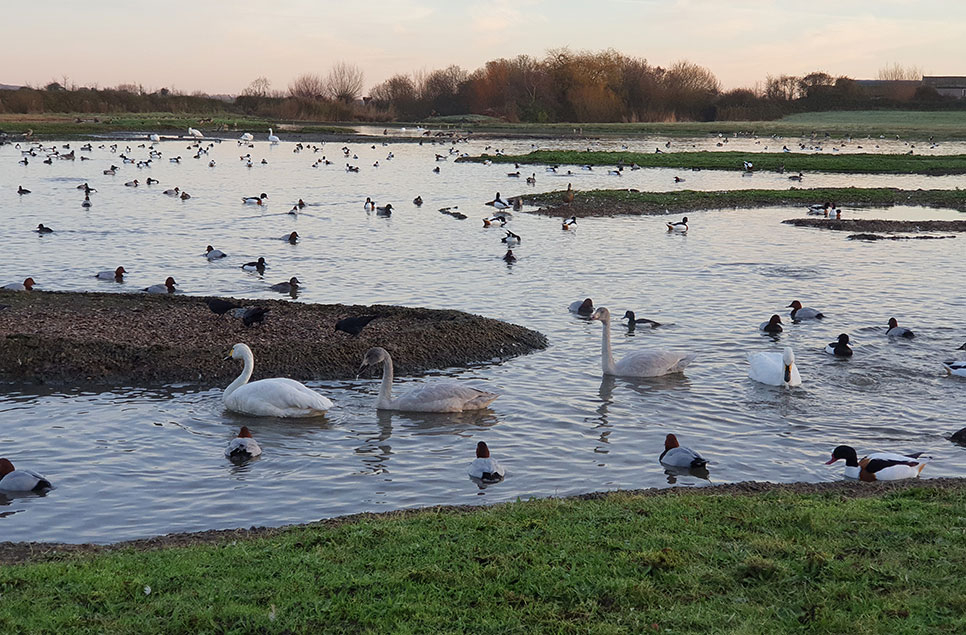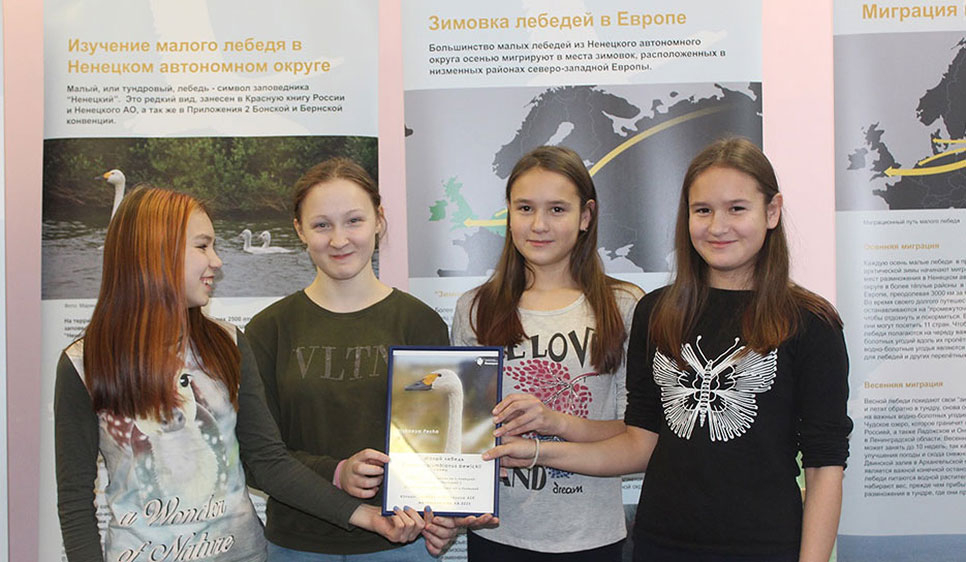A fond farewell!
We waved a final farewell to the Bewick’s swans this week as the last few left on spring migration back to arctic Russia, symbolically ending the British winter.
And what a winter it has been! Familiar faces, unusual associations and of course, the usual squabbles, have peppered a season marked by unusually mild temperatures and low numbers of swans at wintering sites across Northwest Europe.

Like clockwork, Dario was the first to arrive at Slimbridge with three others on 25 October. Now 12 years old, he has been the first to arrive in four of the past six winters and made the most of the grain feeds in relative peace before the arrival of 50 birds on 12 November, which was to be the biggest ‘swan-fall’ in seven years! We watched as the bond between Dario and his ‘associate’, Bridges, strengthened throughout the winter and we were convinced that they were indeed a pair rather than ‘friends’.

Then there was the return of the two divorcees with their second partners! Saruni and Sarindi caught our attention two winters ago when they separated and arrived with new partners, in what was only the second case of divorce in 50 years of research involving the study of 4,000 swan pairs at Slimbridge! Bewick’s usually mate for life, although will re-pair if their partner dies. The longest partnership ever recorded was between Limonia and Laburnum who stayed together for 21 years! It was especially interesting to see the return this winter of Saruni and second partner Sarune with four youngsters, which left us wondering whether the failure of the divorcees to breed was a possible reason for them going their separate ways...........

We were all eagerly awaiting the arrival of Winterling, who would have been 29 years old this year and the oldest Bewick’s on record, but sadly, she did not reach us this winter. We rather hope that she spent time at a site elsewhere. We were especially pleased to see Caper make it back for his 23rd winter and he is now the oldest Bewick’s swan known to be alive.
The mild weather kept many swans further east than usual this winter with 500 birds remaining in Latvia in mid-December at a time of year when snow and ice would ordinarily have encouraged their onwards migration to Germany, the Netherlands and Britain. Numbers on the Ouse Washes, the most important wintering site for the Northwest population, reached no more than 1,969, recorded on 4 January (WeBS) which was lower than the average recorded in the area over the last five years (4,707 birds). At Slimbridge, 285 individuals visited over the course of the winter. As well as ‘short-stopping’ due to the mild weather, there are indications that the population has continued to decline from the 29,000 birds recorded in the mid-1990s. This will be confirmed with the publication of the 2010 International Swan Census results later this year. It would certainly not have helped that the swans suffered yet another poor breeding season with only 9.6% young found in 7,632 birds aged across Europe in December (J. Beekman).
WWT is working with colleagues across the swans’ range to understand the causes of the decline. No single issue has so far explained the 27% decrease in numbers between 1995 and 2005, but a combination of factors (including weather and habitat changes) affecting the swans’ survival and productivity will be looked at in further detail. We will also work with others to sustain a chain of key sites sufficient to support the population throughout the year whilst tackling issues that are known to threaten the birds, such as illegal shooting and lead poisoning. A species action plan, developed to address the decline, will be adopted by the African-Eurasian Waterbird Agreement (AEWA) this year. Conservation actions outlined within the plan will take place over the next ten years, after which the status of the population will be reviewed and the need for further action will be considered.
We wish the swans luck as they continue with their 2,500 mile migration and look forward to seeing them return safely in the autumn!

Many thanks to all swan observers who have sent news on numbers and ringed birds throughout the winter!


